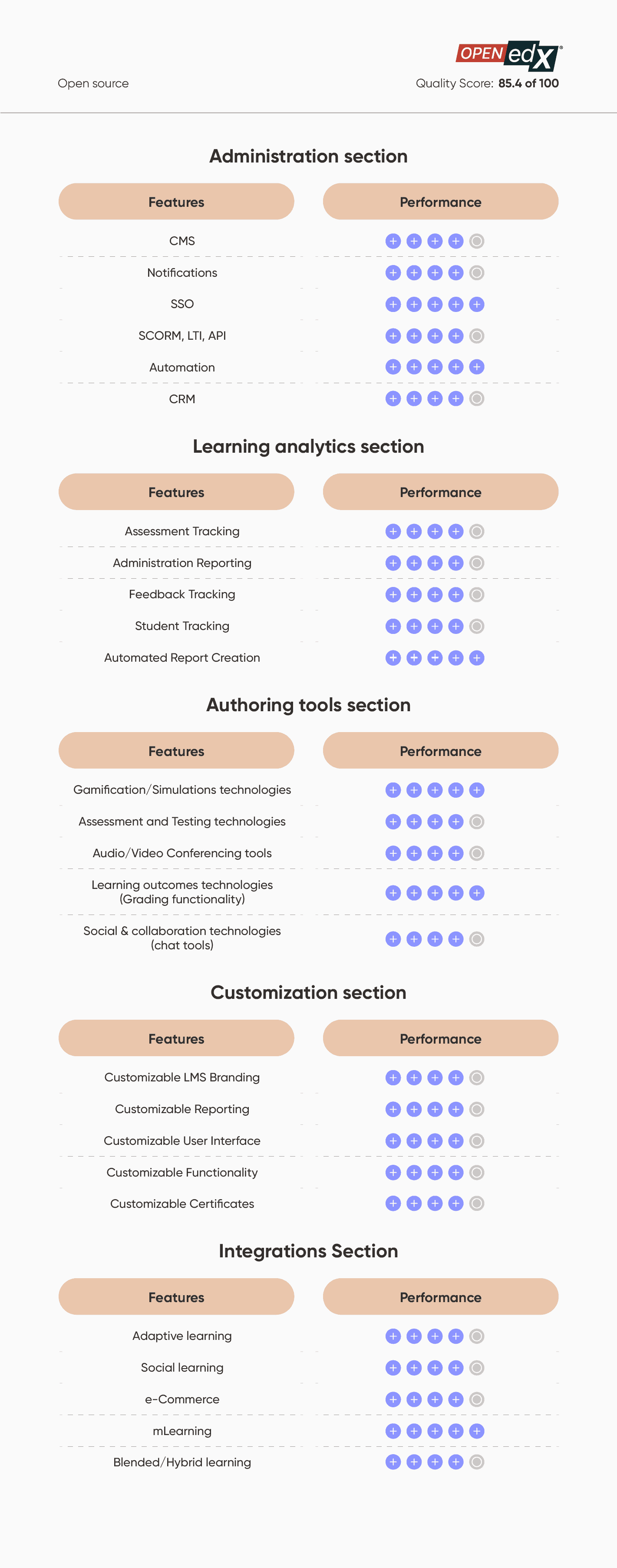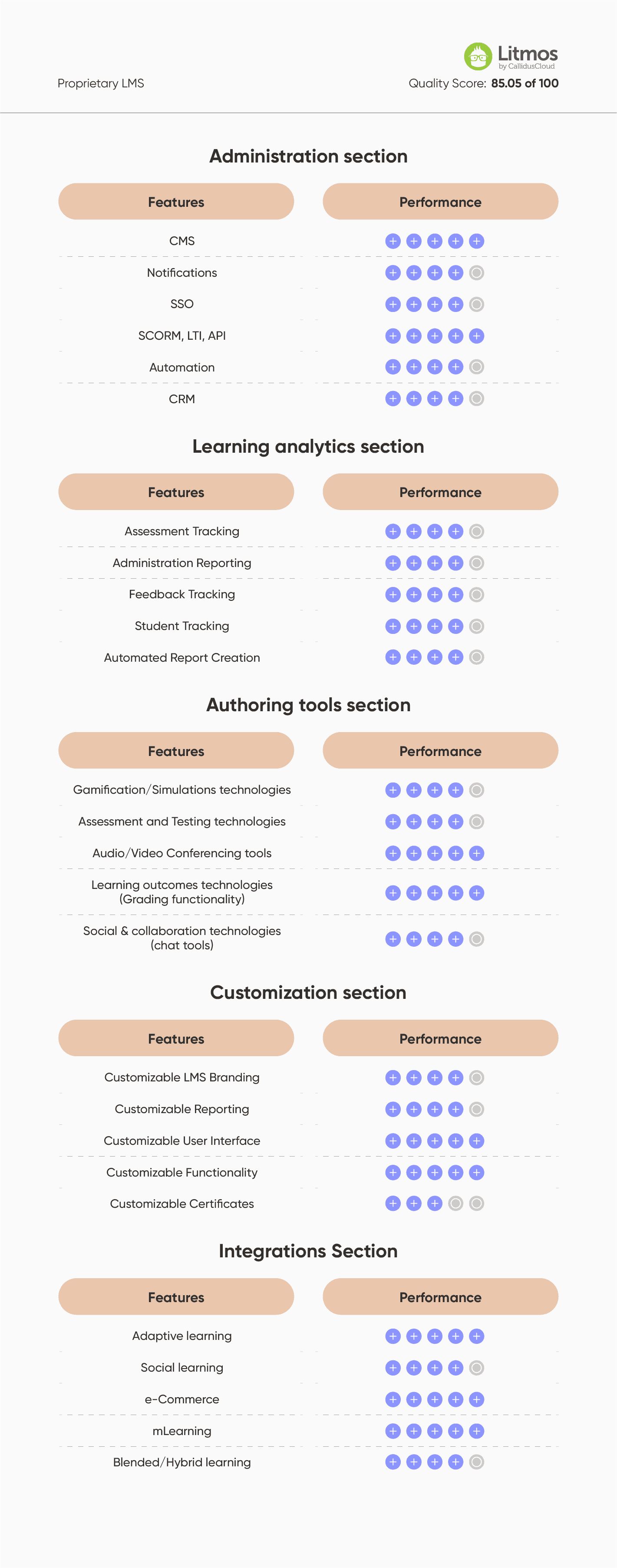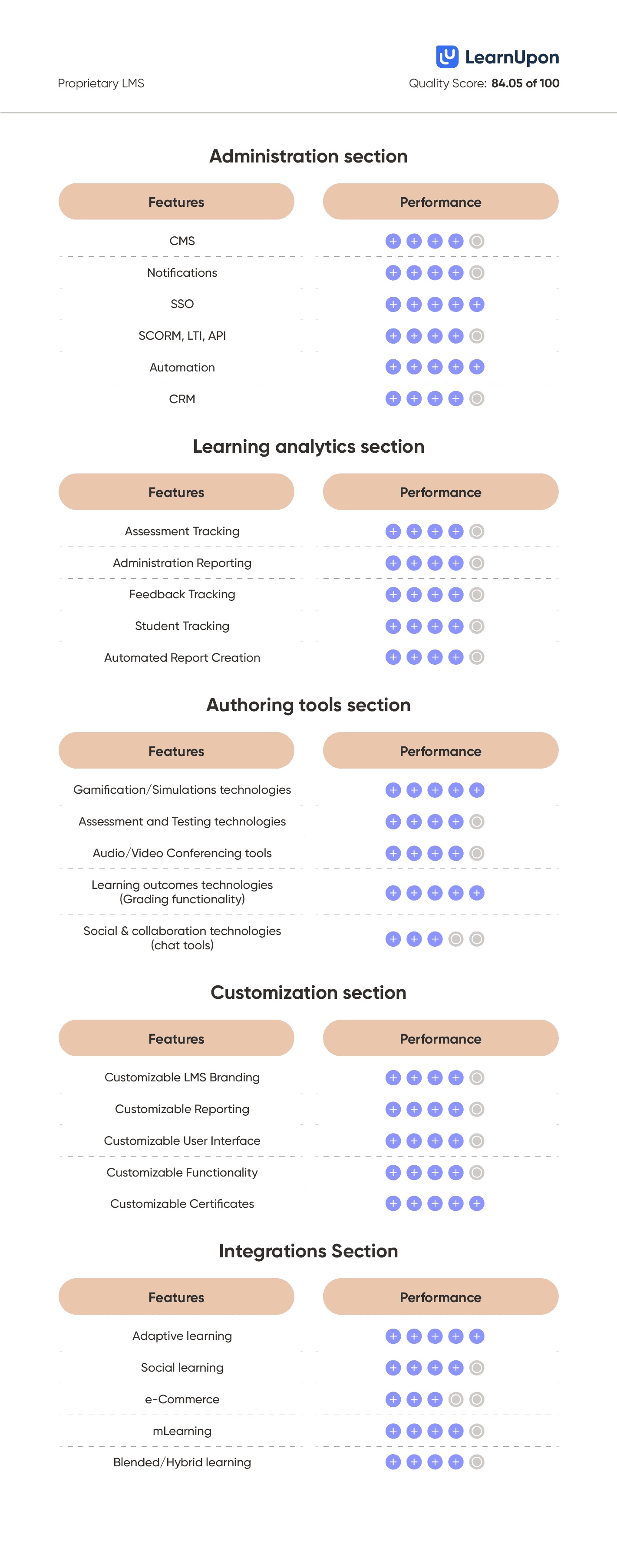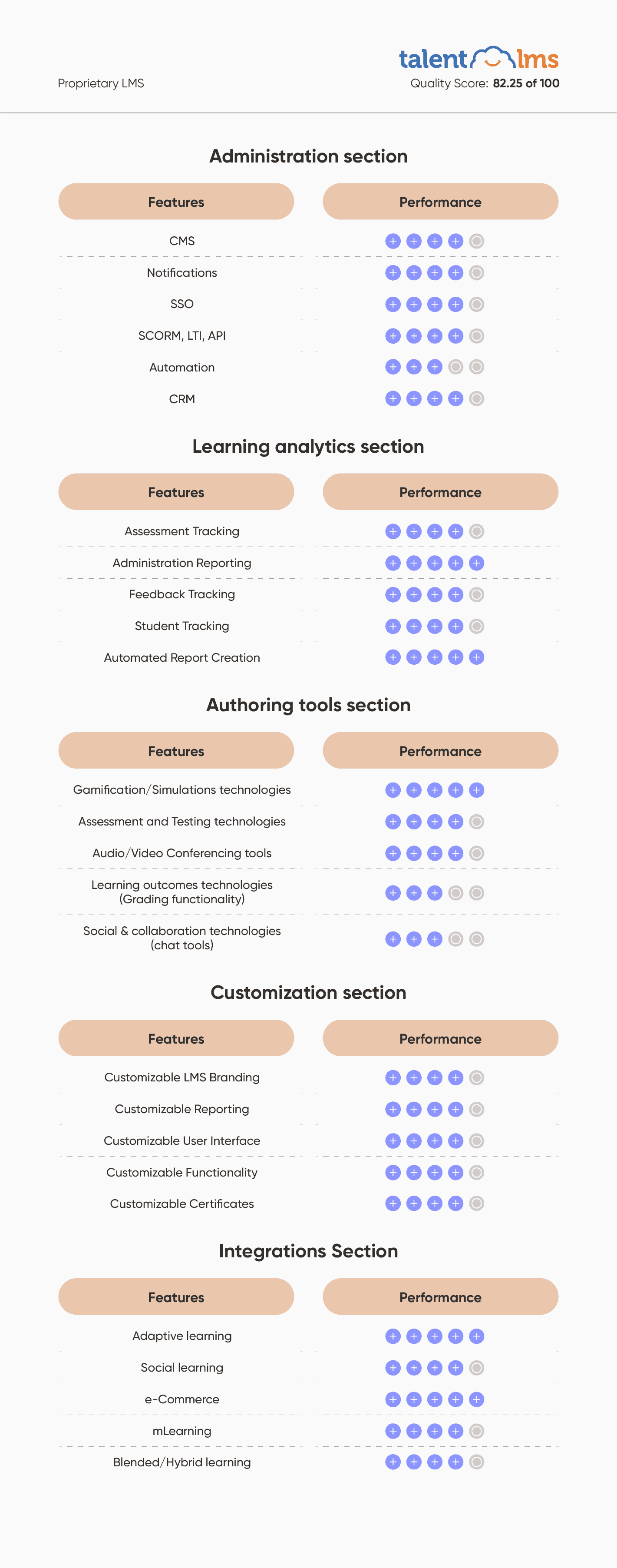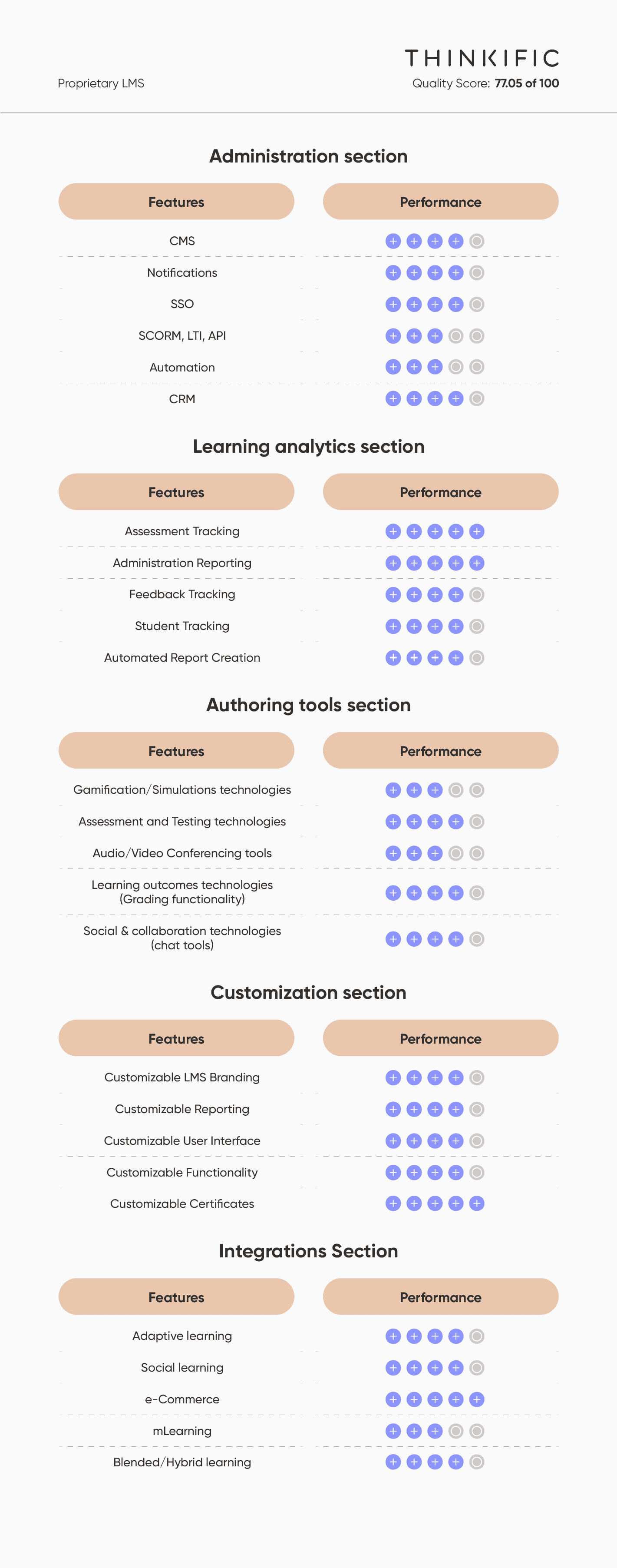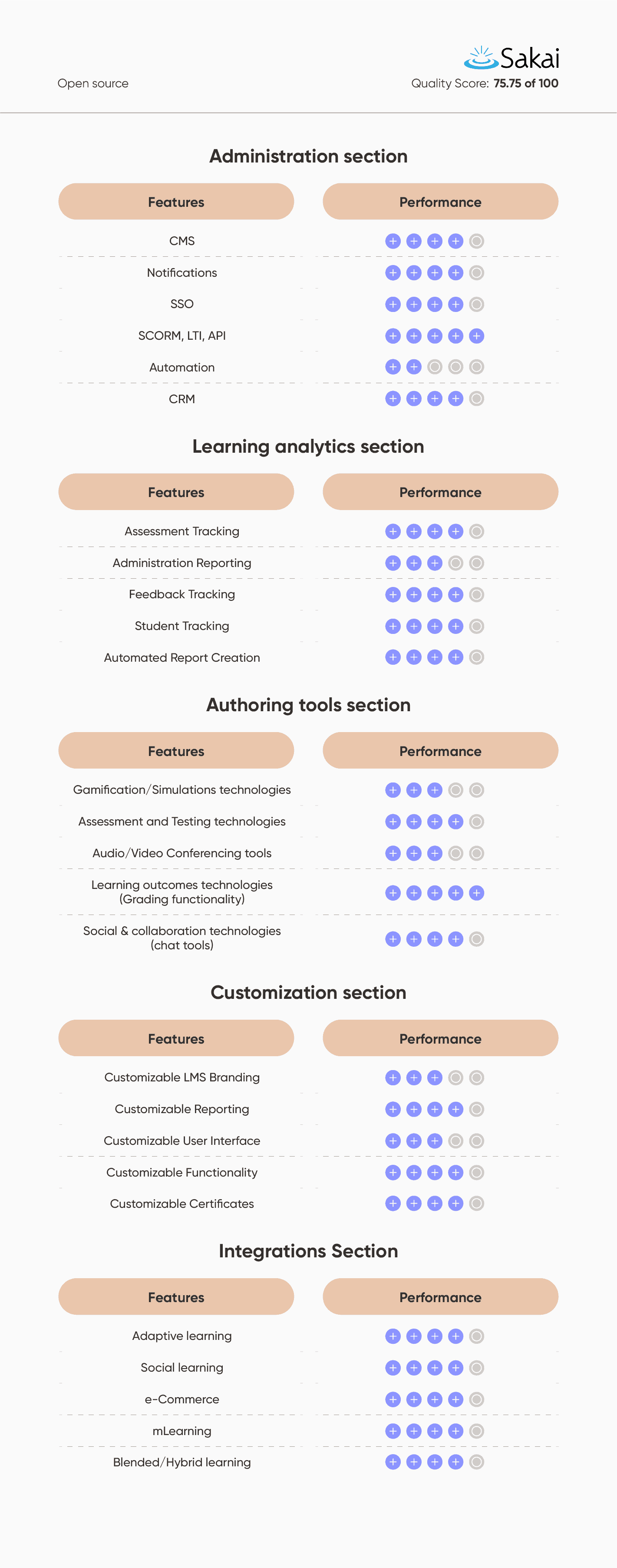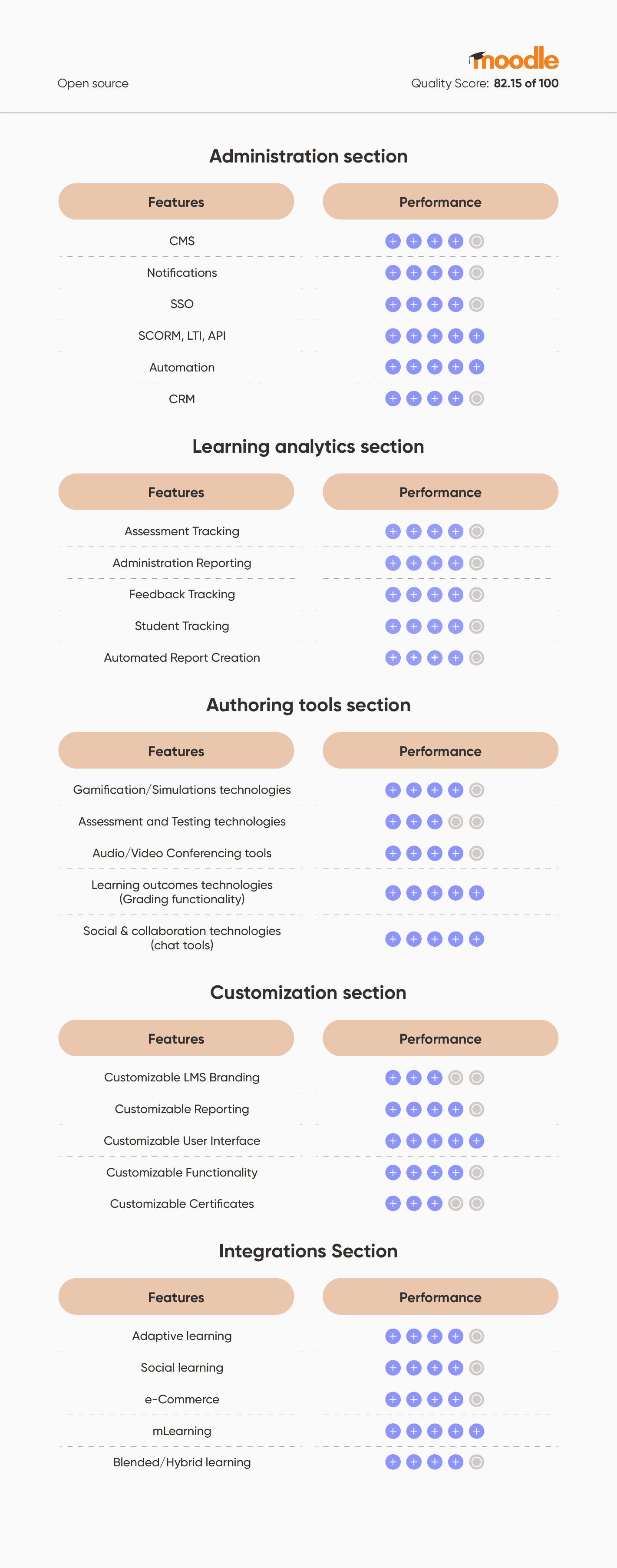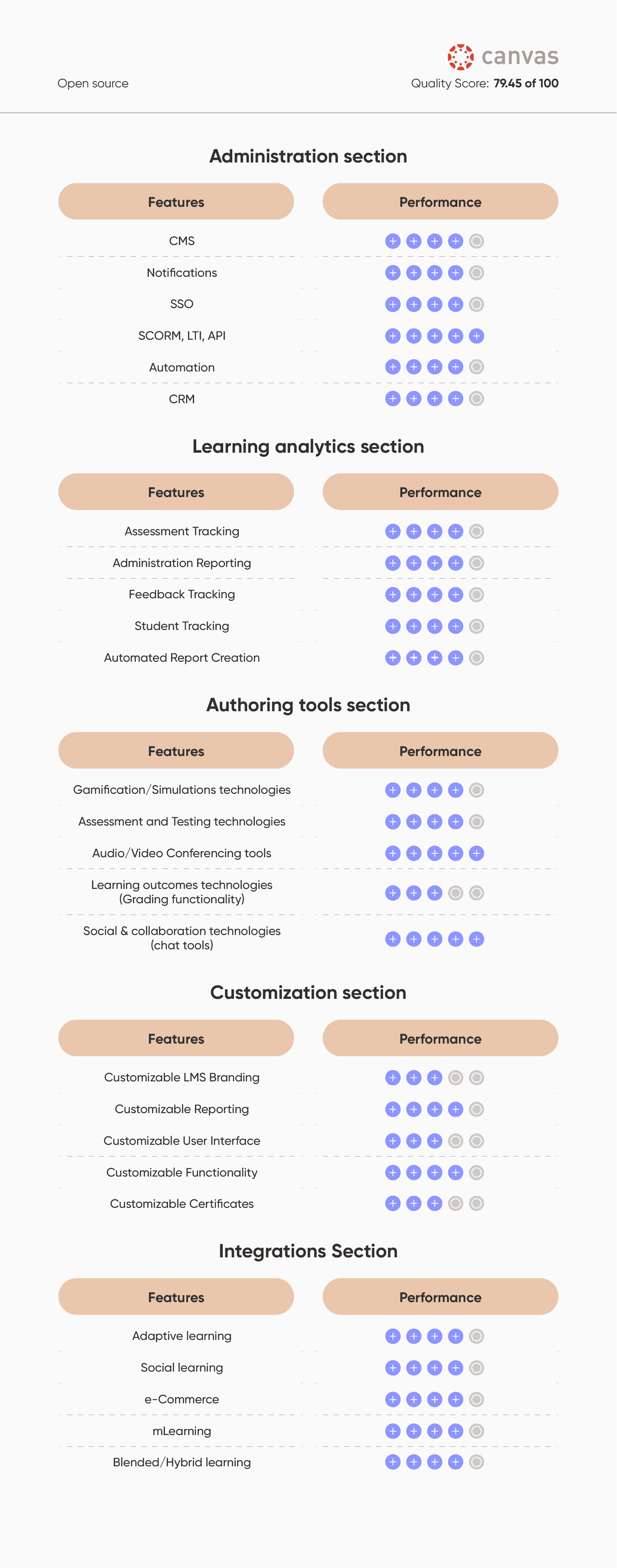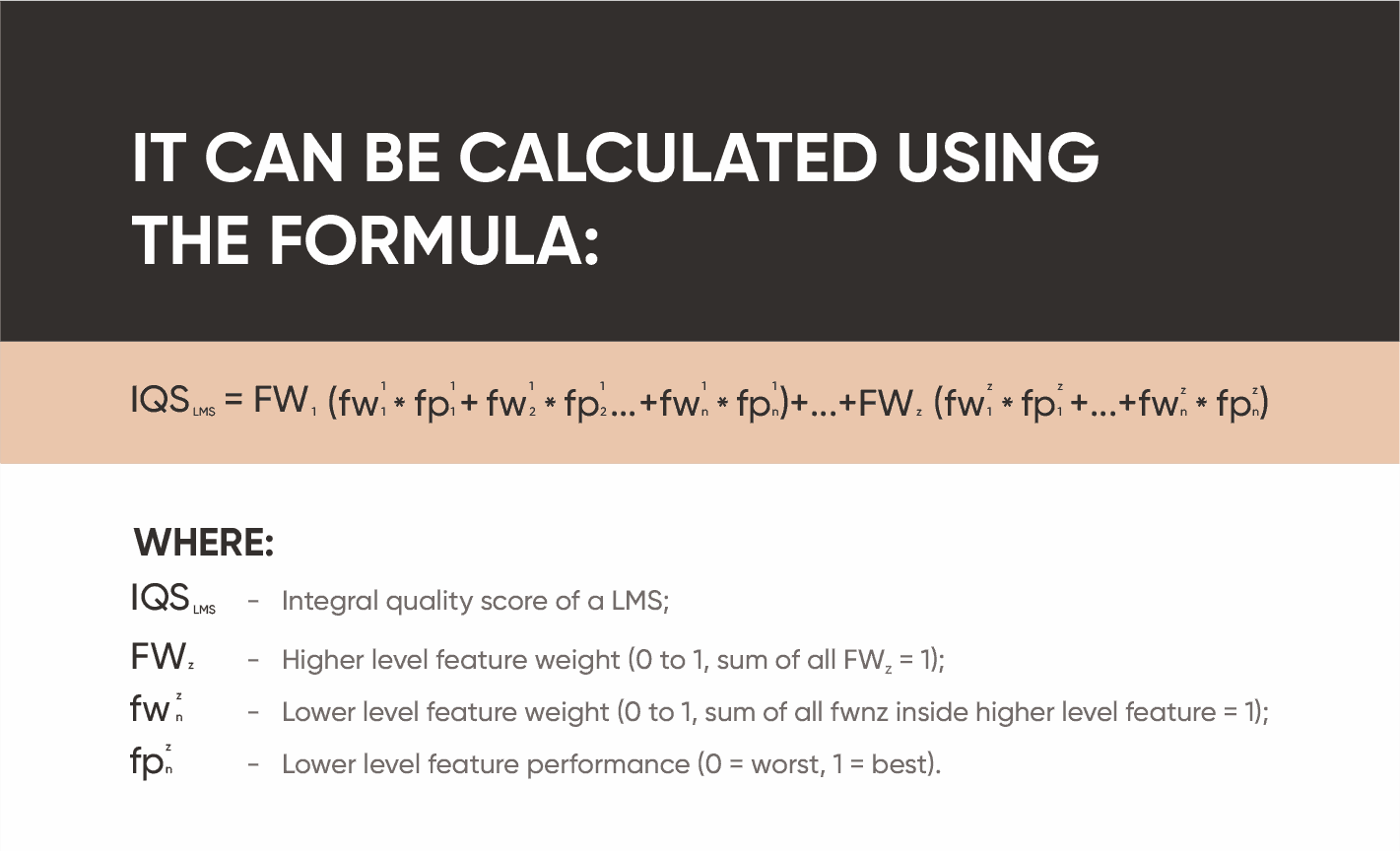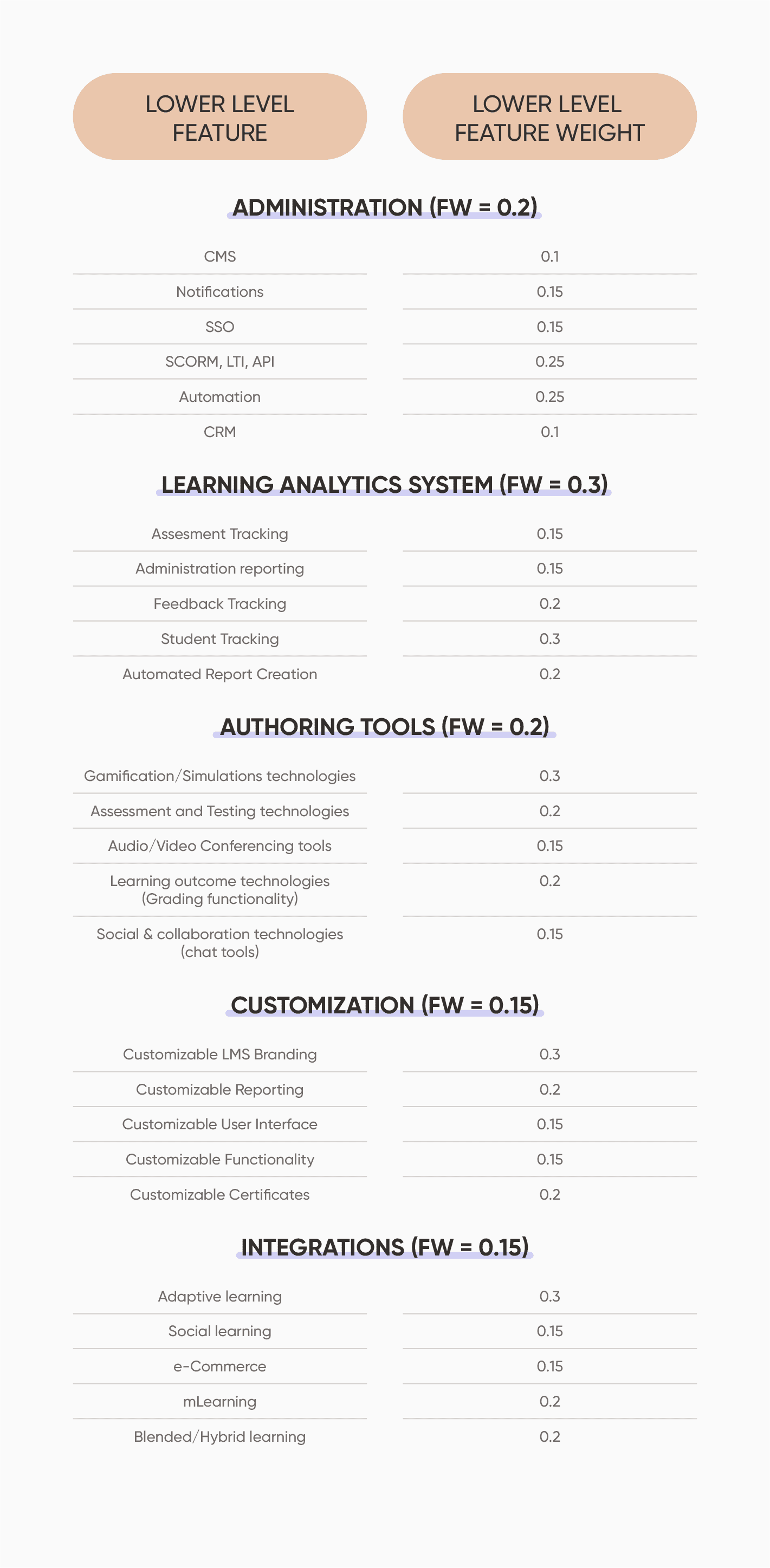Choosing the right LMS can be daunting. Our guide has you covered. We’ll walk you through everything you need to know, from different types of LMS to their key features and benefits. By the end, you’ll be confident in your choice and equipped to advise others on their LMS comparison research.
With various LMS options available, each with its unique features and benefits, it can be challenging to compare LMS systems and determine which platform best meets your needs. In this article, we will compare the features of several leading LMS platforms to help you identify the best fit for your organization.
Best LMS platforms we compared in this post:
- Open edX: Best for comprehensive and customizable e-learning experiences, especially for companies and academic institutions.
- Litmos: Best for continuous learning with robust gamification and eCommerce capabilities.
- LearnUpon: Best for larger organizations needing multilingual support and seamless mobile content accessibility.
- TalentLMS: Best for customizable training solutions with strong analytics and course-selling features.
- Thinkific: Best for creating, selling, and managing online courses with advanced course-selling functionality.
- Sakai: Best for open-source customization, ideal for organizations with skilled IT departments.
- Moodle: Best for those seeking a versatile, open source learning management system with a variety of extensions and a strong community.
- Canvas by Instructure: Best for mobile optimization and collaboration in small to mid-sized organizations.
Quiz
Take this quiz to quickly identify the most appropriate LMS for your needs, streamlining the process without the need for in-depth LMS comparison:
Who Uses Learning Management Systems (LMSs)?
Learning Management Systems are used by a wide range of organizations, including:
- K-12 schools and school districts: LMSs for schools are increasingly being used in primary and secondary education to deliver online courses, supplement classroom instruction, and
monitor learner progress.
- Higher education institutions: Many colleges and universities compare learning management systems to use LMS tools to deliver online courses, manage student enrollment, and
monitor learner progress
- Corporate and business organizations: LMSs are widely used in businesses and corporations to deliver employee training materials and development programs.
- Government organizations: Government LMSs are used to deliver training content and professional development programs to their employees.
- LMS for non-profit organizations: Many non-profit organizations compare learning management systems and use LMSs to deliver training and educational programs to their members or the public.
- Professional associations: Professional associations use the best LMSs to deliver continuing education courses and certification programs to their members.
- Independent educators and tutors: LMSs are also used by independent educators and tutors to deliver their materials and courses and manage their students.
Overall, LMSs are becoming increasingly popular tools as a way to deliver education and training content in a wide range of settings and for a diverse group of learners.
Challenges with Comparing LMS Features
There are several challenges with the comparison of different LMS, including:
- Lack of personalization: Many LMSs do not provide a personalized learning experience for students.
- Limited interactivity: Some LMSs do not offer interactive features, such as real-time discussions or group collaboration.
- Difficulty in tracking student progress: It can be difficult for teachers to monitor learner progress and provide personalized feedback.
- Technical difficulties: LMSs can be complex and difficult to navigate, which can lead to technical difficulties for both teachers and students.
- Limited flexibility: Many LMSs are not flexible and do not allow for easy integration with other educational tools or resources.
- Limited accessibility: LMSs may not be accessible to all students, especially those with disabilities.
- Cost: Proper LMSs can be costly for educational institutions to implement and maintain.
Be sure to first define your LMS requirements, so you can compare apples to apples in your vendor shortlist.
8 Best LMS Comparison
Let’s explore the top eight LMSs, examining their unique features. To save you time, we offer a comprehensive LMS comparison table showcasing the most important LMS features at the outset.
LMS Comparison Table
| LMSs | Customization | Integrations | Analytics | Support | Weakness |
| Open edX ★★★★★ (85.49) | Highly customizable, supports XBlocks | Extensive, integrates with multiple tools | Strong, detailed learning analytics | Active community support, open-source | Requires technical expertise for setup |
| LearnUpon ★★★★☆ (82.2) | Customizable within certain limits | Extensive, integrates with major services | Moderate, with focused insights | Excellent support, fast response time | Lacks some advanced analytics features |
| Litmos ★★★★☆ (80.0) | Limited customization options | Moderate, integrates with popular tools | Basic, standard analytics features | Good support, but some delays reported | Limited flexibility, costly for smaller teams |
| Moodle ★★★★☆ (79.3) | Highly customizable, vast plugin support | Extensive, multiple integration options | Good analytics, customizable with plugins | Strong community support, formal options limited | Can be complex, steep learning curve for new users |
| Canvas ★★★★☆ (79.45) | Customizable, but with some restrictions | Strong, integrates with many tools | Good, but occasional glitches | Moderate support, with room for improvement | Complex for beginners, sometimes unstable |
| TalentLMS ★★★☆☆ (78.3) | Customizable to a fair extent | Good, but limited to standard tools | Basic, requires plugins for detailed data | Reliable support, but limited to premium plans | Limited reporting and analytics without add-ons |
| Thinkific ★★★☆☆ (77.1) | Low customization, preset templates | Moderate, focused on content and sales | Limited, basic analytics | Limited support, especially on lower tiers | Minimal interactive features, lacks depth |
| Sakai ★★★☆☆ (75.6) | Moderate, but requires technical know-how | Limited, mostly open-source plugins | Standard, suitable for smaller groups | Community-driven support, less formal | Outdated interface, requires technical skill |
#1. Open edX | Learning Management System Review
Open edX is a robust, open-source e-learning platform widely utilized by companies and academic institutions worldwide. Developed as a collaborative effort between MIT, Harvard, Berkeley, and Google, Open edX is designed to deliver flexible and scalable learning solutions. Its innovative XBlock technology supports dynamic content creation and management, while its platform supports features such as virtual laboratories, a chatbot for enhanced user experience, and multiple learning modalities.
However, due to its open-source nature, the installation and setup process may be challenging for users without technical experience. This review of LMS comparison highlights how Open edX stands out regarding flexibility and customization.
Open edX Key Features
- XBlock Technology: Customizable content creation and management with thousands of pre-built XBlocks.
- Multimedia Learning: Supports high-definition videos, animations, simulations, and AR/VR technologies.
- Adaptive Learning: Real-time personalization tools for creating tailored learning experiences.
- Team-Based and Project-Based Learning: Collaboration tools include discussion forums, group chats, and video conferencing.
- Open edX Studio: Comprehensive course design tools for managing content, scheduling, grading, and more.
- Open edX Insights: Provides in-depth analytics to understand learner engagement.
- E-Commerce Integration: Supports multi-payment options for various learning products and courses.
Open edX Pros and Cons
Advantages of the Open edX:
- Open Source Flexibility: Completely free and highly customizable, supported by an active community.
- Broad Range of Courses: Offers extensive courses and specializations in various fields.
- User-Friendly Interface: Provides an intuitive platform for both learners and instructors.
- Scalable and Robust: It can support millions of users and is ideal for MOOC platforms.
- Advanced Content Creation: XBlock technology and multimedia support enable dynamic learning experiences.
- Rich Analytics: Comprehensive reporting and insights for better course management.
Disadvantages of the Open edX:
- Challenging Installation: Requires technical expertise for setup and maintenance.
- Limited Instructor-Learner Interaction: Fewer features compared to traditional LMS for direct interaction.
- Cost of Verified Certificates: Many advanced courses and certificates are not free.
- User-Friendliness for Beginners: This LMS can be complex for users without prior experience.
- Mobile Responsiveness Issues: Some content may not be optimized for mobile devices.
Ideal For:
Open edX is an ideal LMS for educational institutions, business coaches, corporations, and organizations that need a flexible, scalable, and sophisticated LMS solution. Moreover, it is particularly suitable for institutions looking for an open-source platform that can host a wide range of online courses, degree programs, online certifications, and more.
Open edX Pricing:
- License Model: Free Open Source
- Starting Price: N/A
- Free Trial: No
Most of the costs associated with Open edX are individually priced by official Open edX partners for additional services, such as e-learning custom mobile app development, training course development, and more.
#2. Litmos | Learning Management System Review
Litmos is a cloud-based LMS designed for continuous learning, offering a comprehensive solution for organizational training needs by integrating learning management, content management, and extended enterprise capabilities.
This platform is ideal for those looking to compare LMS features. It includes an eLearning environment for creating logical learning paths, messaging and notifications, corporate compliance tracking, and gamification for enhanced learner engagement. Additionally, it supports Tin Can and SCORM content, mobile accessibility, and third-party application integration.
Litmos Key Features
- SCORM and AICC Compliance: Supports industry standards for content delivery.
- Gamification: Incorporates game-like elements to boost learner engagement.
- Mobile Accessibility: Access the platform from any device.
- Custom Branding and Multi-language Support: Tailor the platform to your organization’s identity.
- Pre-packaged Courses: Extensive content library covering diverse topics.
- Reporting Tools: Built-in analytics and dashboards for monitoring learner progress.
Litmos Pros and Cons
Advantages of Litmos:
- Easy to set up and user-friendly LMS interface.
- Flexible pricing plans based on the number of active learners.
- Strong customer support and service.
- Extensive LMS integration options with APIs and over 50 connectors.
Disadvantages of the Litmos:
- Some features are underdeveloped or incomplete.
- Limited flexibility in user permissions.
- Integration challenges with certain third-party applications.
- Lack of full compatibility with modern standards like xAPI.
Ideal For
Best suited for mid-to-large-sized organizations looking for a full-scale LMS with robust gamification features and extensive pre-packaged course content.
Litmos Pricing Model
- SAP Litmos Pro: Starts at $6 per user/month for 150–500 active learners. Larger organizations receive discounts.
- SAP Litmos Pro+Courses: Starts at $15 per user/month for 50–150 active learners, with tiered discounts for more learners. Customized quotes are available for over 1,000 learners.
- A 14-day free trial is available for both plans, with additional add-on services and automation bundles upon request.
#3. LearnUpon | Learning Management System Review
LearnUpon is a versatile LMS tailored to cater to the diverse needs of businesses and educational institutions globally. When you compare different LMS platforms, LearnUpon stands out for its user-friendly interface, strong integration options, and support for multiple languages, which make it accessible to a wide audience.
It ensures smooth learning experiences across devices with its responsive mobile interface and detailed reporting capabilities, making it a versatile solution for organizations aiming to keep employees and students engaged with equitable learning methods.
LearnUpon Key Features
- Responsive Mobile Interface: Ensures that learning can be accessed across multiple devices with ease.
- Integration Capabilities: Includes support for SSO, API integrations, and third-party tools like Teams and Zoom.
- User Management: Offers tools for automatic user enrollment based on hire date, division, or department.
- Content Creation and Management: Enables straightforward creation and management of courses with minimal training.
- Support and Customer Service: Highly praised customer support team that assists from onboarding through to daily usage.
- Multilingual Support: Provides a platform suitable for global audiences with multiple language support.
LearnUpon Pros and Cons
Advantages of LearnUpon:
- User-Friendly Interface: Simplifies navigation for both administrators and learners, allowing easy course setup and usage.
- Robust Customer Support: Consistently praised for quick and effective responses to queries and problems.
- Integration-Friendly: Built with various integrations in mind, such as SSO and API, making it compatible with multiple systems.
- Highly Customizable: Allows for customization of course content and learner experience based on regional or group needs.
- Frequent Updates: Regularly updates its features to stay current with customer requirements and industry standards.
Disadvantages of LearnUpon:
- Limited Visual Indicators: Some features lack clear visual cues for user status, which can complicate navigation for administrators.
- Need for Improved Reporting: The reporting capabilities could be more detailed, particularly regarding keyword search and content needs.
- Learning Path Flexibility: The flexibility for learners to follow paths based on specific needs could be enhanced.
Ideal For
LearnUpon can be the right learning management system open source for businesses and educational institutions of all sizes looking for a flexible, scalable LMS solution. It caters particularly well to organizations that prioritize mobile learning, need strong integration options, and value responsive customer support. LearnUpon is suitable for companies that require a platform for onboarding, compliance training, and professional development.
LearnUpon Pricing:
- Basic: $599 per month — Supports fundamental LMS functionalities for small teams.
- Essential: $999 per month — Includes all Basic features plus SCORM and xAPI support, custom branding, gamification, eCommerce, and webinar integrations; suitable for up to 150 users.
- Premium: $1,699 per month — Covers all Essential features and adds multiple language support, Zapier integration, and two-way API access; designed for 150 to 500 users.
- Enterprise: Custom pricing — Tailored for organizations with 500+ users, featuring all Premium options, plus white labeling, Salesforce integration, and enterprise-level SLA.
#4. TalentLMS | Learning Management System Review
TalentLMS is a cloud-based LMS designed to offer a highly customizable, user-friendly platform for training various audiences, from employees to customers. In the LMS comparison, TalentLMS stands out for its intuitive interface, robust analytics, and seamless integrations with multiple applications and services.
The platform supports SCORM and TinCan (xAPI), features video conferencing, course selling, and gamification, and is especially suited for small to medium-sized businesses, with scalable options for larger organizations. Furthermore, TalentLMS ensures a smooth training experience without workflow interruptions, making it a versatile choice in today’s competitive LMS landscape.
TalentLMS Key Features
- Customizable Platform: Easily tailor the LMS to your brand with custom themes, domains, and logos.
- Course Creation and Management: Build courses with built-in tools, add tests and quizzes, and use ready-made courses from TalentLibrary.
- Gamification: Enhance engagement through badges, points, leaderboards, and rewards.
- Multilingual Support: Available in multiple languages for diverse teams and organizations.
- Analytics and Reporting: Detailed analytics and reporting tools, including custom reports to
monitor learner progress.
- Mobile Compatibility: Fully responsive on all devices for learning on the go.
- Integrations: Supports integrations with third-party apps like Salesforce, GoToMeeting, Shopify, Stripe, and PayPal.
TalentLMS Pros and Cons
Advantages of the TalentLMS:
- Intuitive and easy-to-use interface, reducing the learning curve for administrators and learners.
- Comprehensive course creation tools, including support for SCORM, TinCan (xAPI), and CMI5.
- Robust analytics and reporting features for tracking learner progress and engagement.
- Cost-effective with a flexible pricing model catering to different business sizes.
- Strong integration capabilities with third-party apps, enhancing functionality.
Disadvantages of the TalentLMS:
- Limited advanced features in lower-tier pricing plans, which may require upgrades for more extensive capabilities.
- Occasional UX issues due to outdated technology, requiring specific browser settings.
- Arbitrary file size limits for hosting larger SCORM/XAPI files, which can be restrictive for some users.
Ideal For
TalentLMS is ideal for small to medium-sized businesses and organizations looking for a cost-effective, easy-to-use LMS with robust features. It’s especially suitable for companies needing scalable training solutions, customizable user experiences, and comprehensive analytics.
TalentLMS Pricing
- Core Plan: Starting at $69 per month for up to 100 users, unlimited courses, unlimited email support, 1 branch, and a custom homepage.
- Grow Plan: Starting at $109 per month for up to 500 users, includes all Core features plus 3 branches, onboarding support, and custom reports.
- Pro Plan: Starting at $139 per month for up to 1,000 users, includes all Grow features plus 15 branches, priority email support, and live chat support.
#5. Thinkific | Learning Management System Review
Thinkific is an all-in-one LMS platform designed for creating, selling, and managing online courses. Known for its user-friendly interface, Thinkific offers a range of tools including a website builder and advanced course-selling functionality, which makes it appealing to both beginners and experienced educators.
When you compare LMS platforms, Thinkific stands out for its ease of use, extensive support, and robust integration capabilities. However, its limited interactive learning features may not cater to every need.
Thinkific Key Features
- Course Creation Tools: Thinkific provides a drag-and-drop builder and various pre-designed themes, allowing users to create visually engaging courses without any coding knowledge. You can easily add text, images, videos, and quizzes to enhance the learning experience.
- Community Building: Tools for building communities around your courses, such as posts, comments, live lessons, and notifications, help keep students engaged and foster a sense of community.
- Memberships: Offers membership options with exclusive access to courses and communities, providing a steady income stream for content creators.
- Integrations: Seamlessly integrates with tools for email marketing, analytics, payment processing, and more, ensuring compatibility with your existing systems.
- Mobile App: A mobile app that allows users to access content anytime, anywhere, enhancing learning flexibility.
- Analytics and Reporting: Comprehensive analytics and reporting tools help track student progress and engagement, enabling data-driven improvements.
- Digital Download Capabilities: Ability to offer digital products as bonus materials or standalone resources.
Thinkific Pros and Cons
Advantages of Thinkific:
- Easy Course Creation: No coding skills are required to create a course, but you have the flexibility to access the source code for advanced customizations.
- User-Friendly: The platform’s usability, integrations, and support simplify course management, making it suitable for all users, from beginners to advanced.
- Flexible Pricing: Free to start, with a range of pricing plans to suit different needs, from $49/month for the Basic plan to Thinkific Plus for larger entities.
- Robust Support System: Customer support is accessible via various channels, including a Facebook support group that provides a sense of community and quick answers to questions.
- Versatile for Various Business Sizes: Thinkific’s flexible pricing and feature set make it suitable for a wide range of businesses, from small startups to larger organizations.
Disadvantages of Thinkific:
- Limited Interactive Features: The types of exercises and quizzes are somewhat basic compared to other platforms, lacking options like drag-and-drop or fill-in-the-gap style questions.
- Support Issues: Some users have reported unsatisfactory support experiences, including confusion over account handling and delayed responses.
- Lack of Integrated Marketing Features: Does not have an integrated email marketing feature, requiring users to rely on third-party tools like MailChimp via Zapier.
- Design Limitations: Customizing the design templates can result in a less polished appearance if not done carefully.
Ideal For
Thinkific is ideal for online trainers and educators, small to medium-sized businesses, and content creators looking for an easy-to-use platform with robust course creation tools and a flexible pricing model. Its community-building tools make it a good fit for those who want to engage with their audience on a deeper level.
Thinkific Pricing
- Free Plan: Start at $0, suitable for testing the platform with limited features.
- Basic Plan: $49 per month, offering essential tools for course creation and sales.
- Pro Plan: $79 per month, includes advanced features like memberships and more customization options.
- Premier Plan: $399 per month, designed for businesses that need extensive support and advanced functionalities.
- Thinkific Plus: Custom pricing for larger organizations, offering more tailored features and support.
#6. Sakai | Learning Management System Review
Sakai is a flexible, open-source LMS designed for small-to-mid-sized organizations and educational institutions that require a customizable eLearning platform. Developed by its adopter community, Sakai evolves to meet diverse user needs with a modular design that supports third-party plugins and integrations.
While it offers extensive customization and cost savings, it requires technical expertise to set up and maintain, making it ideal for organizations with skilled IT teams. When you compare LMS systems, Sakai stands out for its open-source nature and adaptability, although it may present challenges for non-technical users.
Sakai Key Features
- Open Source Flexibility: As an open-source learning management system, Sakai allows for complete customization, letting institutions modify the platform to fit their unique requirements.
- Collaboration Tools: Supports various tools for collaboration, including project sites for faculty, students, and administrator groups, and integrates with open-source web conferencing tools like BigBlueButton.
- Customizable Learning Environment: Offers modular design capabilities, supporting third-party modules and plugins for added flexibility.
- Responsive Design: Improved performance on mobile devices, allowing students and educators to access content on the go.
- Community Driven: Developed and maintained by a global community that continually updates and enhances the platform.
Sakai Pros and Cons
Advantages of the Sakai:
- Cost-Effective: As a free, open-source platform, Sakai significantly reduces costs associated with LMS software.
- Customization: Allows institutions to customize the LMS environment extensively to meet specific needs.
- Robust Toolset: Offers a comprehensive set of tools for creating, managing, and delivering courses, including Test and Gradebook tools, which are group-aware.
- Community Support: Strong community support with a network of users willing to share knowledge and improvements.
- Integration with Open-Source Tools: Works well with other open-source software like BigBlueButton for web conferencing.
- Accessibility Improvements: Actively working with vendors to enhance accessibility, making it a great option for diverse user groups.
Disadvantages of the Sakai:
- Steep Learning Curve: May require significant technical expertise to install, configure, and maintain, making it less suitable for non-technical users.
- Interface Issues: Users report that the interface can be clunky and not very intuitive, particularly for faculty and students.
- Limited Interaction Features: Minimal interaction between students and teachers, limited to email, delayed chat, and forums, which can lead to a less engaging learning experience.
- Inconsistent Support: Feedback indicates that support can be inconsistent, with some users finding it difficult to get timely help.
- Irritating Quirks: Reports of minor but persistent bugs, such as issues with the Gradebook tool and assignment submission process, can frustrate users.
Ideal For
Sakai is best suited for educational institutions and organizations with a strong IT team that can handle the technical requirements of an open-source LMS. It is ideal for those who need a customizable and cost-effective solution, particularly if they are looking for an LMS that can be tailored to specific organizational needs through community-driven development and open-source tools.
Sakai Pricing
Sakai is an open-source platform, free to download and use. Organizations can choose to host Sakai on their servers or work with commercial affiliates to host the platform in the Amazon cloud. The platform offers a free trial, and additional costs may apply if choosing external hosting or professional support services.
#7. Moodle | Learning Management System Review
Moodle is a flexible, open-source LMS that provides both basic and advanced functionality for free, making it an attractive option for educational institutions and businesses of all sizes. As an open-source platform, Moodle LMS allows organizations to tailor their eLearning experience, offering extensive plugins and integrations.
However, it requires a high level of technical expertise for customization, and setting up the system can be complex and time-consuming. For those looking for LMS comparison features, Moodle’s adaptability, wide range of extensions, and strong community support make it a valuable, if sometimes challenging, solution. If Moodle is on your shortlist, use our Moodle pricing guide to turn those high-level pros and cons into a realistic cost model for your own stack.
Moodle Key Features
- Customizable Course Creation: Offers extensive options for creating interactive learning experiences with quizzes, assignments, forums, and multimedia content.
- Plugins and Integrations: Supports over 2,000 plugins to extend functionality, including H5P for interactive content, SCORM, and LTI integrations.
- Multilingual Support: Provides interfaces in multiple languages, catering to a global audience.
- Robust Reporting and Analytics: Tracks learner progress with detailed analytics and reports, enabling data-driven decisions.
- API Access and External Integrations: Allows integration with various third-party applications, enhancing functionality for diverse educational needs.
- Mobile Compatibility: Fully responsive design ensures access to courses via smartphones and tablets.
- Community and Support: Access to a vast Moodle community for collaborative support, alongside optional services from Moodle Certified Partners.
Moodle Pros and Cons
Advantages of Moodle:
- Highly Customizable: Allows deep customization to meet specific educational needs.
- Extensive Plugin Ecosystem: Thousands of plugins and integrations are available to enhance the learning experience.
- Cost-Effective: Open-source nature eliminates subscription fees, making it suitable for organizations with tight budgets.
- Community Support: A strong global community offers free resources, forums, and peer support.
- Flexible Deployment Options: Can be self-hosted or managed through certified Moodle partners.
Disadvantages of Moodle:
- Steep Learning Curve: New users may find the platform complex and challenging to navigate.
- Technical Expertise Required: Customization and management often require significant IT resources and knowledge.
- Performance Issues: Large-scale deployments may experience lag and performance bottlenecks.
- Limited Default Features: Additional plugins are often necessary to match the functionality of other LMS platforms.
Ideal For
Moodle is well-suited for educational institutions like K-12 schools, universities, and training centers that require a highly customizable LMS to cater to diverse learning needs. It’s also an excellent choice for organizations with in-house IT capabilities, allowing them to tailor the platform extensively for corporate training or professional development. So, non-profits and community groups with limited budgets can benefit from its open-source nature, making it a cost-effective solution supported by a strong global community.
Moodle Pricing
- License: Open Source under the GNU General Public License.
- Starting Price: Free to download and use; self-hosting costs apply.
- Standard Hosting: Starts at $130 per year for 50 users, with a free trial available.
- Support and Hosting Services: Available through Moodle Certified Partners for custom pricing.
#8. Canvas | Learning Management System Review
Canvas by Instructure is a popular freemium LMS designed to be accessible, customizable, and user-friendly, standing out in the comparison of different LMS options available today. It integrates well with existing tools and features a mobile-optimized interface, allowing for flexible learning in various educational environments.
With a focus on ease of use and collaboration, Canvas is an appealing choice for small to mid-sized organizations looking for a comprehensive digital learning solution. Although Canvas provides a robust set of basic features for free, more advanced options and dedicated support are available at a cost. While the platform is technically open-source, certain modules may still require third-party development or additional fees.
Canvas LMS Key Features
- Course Creation and Management: Canvas offers tools for creating, managing, and organizing courses efficiently. It includes modules, quizzes, assignments, and grading functionalities that cater to diverse educational needs.
- Mobile Optimization: Designed with mobile use in mind, Canvas has strong app support, allowing students and instructors to access the platform on various devices, keeping everyone connected on the go.
- Integration Capabilities: Canvas integrates with over 200 LTI tools, allowing for seamless incorporation of external applications like Zoom, Edpuzzle, and more. It also connects with existing Student Information Systems (SIS).
- Collaboration Tools: Canvas includes robust tools for collaboration, such as discussion boards, video conferencing, group assignments, and messaging, facilitating a more interactive learning environment.
- Accessibility and User Support: Canvas maintains a clean user interface (UI) and provides extensive support documentation, including guides and tutorials. However, direct support options may vary based on the subscription plan.
- Digital Badging and Analytics: Canvas includes features like digital badging to recognize achievements and provides analytics to track student engagement and performance.
Canvas Pros and Cons
Advantages of the Canvas:
- User-Friendly Interface: The platform is easy to navigate for both students and educators, with intuitive course management and clear organization.
- Extensive Integration Options: Over 200 integration tools ensure compatibility with a wide range of educational resources and external applications.
- Mobile Optimization: Strong mobile support ensures access and connectivity across various devices.
- Customization and Flexibility: Provides extensive options for customizing course content, assessments, and communication tools, allowing for tailored learning experiences.
- Strong Community Support: A well-maintained community forum and online resources help resolve user issues and provide guidance.
Disadvantages of the Canvas:
- Limited Customization for Specific Needs: Some educators find that Canvas lacks flexibility in specific areas, like individual reassignment of tasks or group grading.
- Occasional Technical Glitches: Users report issues such as new quiz glitches, integration inconsistencies, and software crashes, which can disrupt the learning experience.
- Less Suitable for Younger Students: The platform’s design may be too sophisticated for younger students, requiring additional teacher effort to simplify the interface.
- Customer Support Challenges: Some users feel that customer support could be more responsive and effective, particularly for non-technical users.
Ideal For
Undoubtedly, Canvas is ideal for small to mid-sized educational institutions, such as K-12 schools, colleges, and universities, that seek a comprehensive, customizable, and easy-to-use LMS. It is also well-suited for organizations offering blended or fully virtual environments, where robust mobile access and integration capabilities are essential. Institutions with specific requirements for course content customization, collaboration tools, and extensive integrations will find Canvas particularly valuable. However, for those exploring other options, there are several Canvas alternatives available that may better suit different institutional needs or budget constraints.
Canvas LMS Pricing
- Freemium Model: Canvas offers a freemium model with basic features available at no cost.
- Paid Plans: Advanced features and dedicated support are available at additional costs, depending on the institution’s size and needs.
- Personnel Training: Available for an additional fee to assist with onboarding and maximizing platform use.
- Open Source Option: Canvas is technically open-source; however, certain modules may require third-party development.
LMS Comparison — Evaluation Criteria
To make an informed decision about which LMS to choose, it’s important to compare and consider the available options based on features, benefits, and limitations. E-learning industry defines 99 criteria and features commonly used to compare different LMS platforms to help you make a more informed choice.
LMS Consideration Factors
For our LMS comparison, we used such main groups and subgroups of categories:
Administration:
1. Content management system.
2. Notifications.
3. SSO.
4. SCORM, LTI, API.
5. Automation.
6. CRM.
Learning Analytics:
1. Assessment Tracking.
2. Administration Reporting.
3. Feedback Tracking.
4. Student Tracking.
5. Automated Report Creation.
Authoring Tools:
1. Gamification/ Simulations technologies.
2. Assessment and Testing technologies.
3. Audio/ Video Conferencing tools.
4. Learning outcomes technologies (Grading functionality).
5. Social & collaboration technologies (chat tools).
Customization:
1. Customizable LMS Branding.
2. Customizable Reporting.
3. Customizable User Interface.
4. Customizable Functionality.
5. Customizable Certificates.
Integrations:
1. Adaptive learning.
2. Social learning.
3. e-Commerce.
4. mLearning.
5. Blended learning/Hybrid learning.
Integral Quality Score Calculation
To compare and choose the best LMS options, we used the “multi-attribute utility” model approach. This model considers the different characteristics and their impact on the final decision, known as “feature weighting.”
We evaluated the frontrunners of each LMS type based on feature weighting and “feature performance,” which rates each characteristic on a scale from 0 (worst) to 1 (best). By combining these metrics, we calculated an integral score for each option presented in the LMS comparison table, making it easier to compare and choose the best option.
For example, when choosing a new laptop, we can consider factors: performance, design, battery life, display quality, and sound quality. But these features have a different impact on our decision, so feature weighting could be the following:
- Performance – 40%
- Battery life – 20%
- Display Quality – 20%
- Sound Quality – 10%
- Design – 10%
- The sum is always 100%
Different features work differently in various products. Some are perceived as “better,” and some as “worse.” We’ll call these rates “feature performance.” Feature performance will be assessed from 0 (worst) to 1 (best).
Combining features’ weight and performance can be the integral score for comparing LMS platforms.
FW, fw, fp are defined by our research based on CHLOE 3 and CHLOE 2 report, The Complete LMS Buying Guide, blog posts, and discussions on industry-leading forums like Elearning Industry, Capterra, Quora, Trustradius, Class Centra, Software Advice… 200+ resources in total.
Feature Weight info for Higher Level and their Lower-level Factors:
Conclusion
In conclusion, choosing the suitable LMS is a critical decision that can significantly impact your organization’s success. By taking the time to evaluate your needs, make use of this comparison of learning management systems, and consider factors such as cost, scalability, and customization, you can select an LMS that meets your requirements and helps you achieve your goals.
FAQ
What is a Learning Management System (LMS)?
What are the Common Features of a Learning Management System (LMS)?
1. Course creation and management tools: Allows administrators to create, edit, and manage educational or training content.
2. User management: Allows administrators to create and manage user accounts, assign roles and permissions, and track user progress.
3. Communication and collaboration tools: Includes features such as discussion boards, messaging, and group work tools that allow learners to communicate and collaborate with each other.
4. Assessment and testing: Includes tools for creating and administering quizzes, tests, and exams, as well as tracking and reporting on results.
5. Tracking and reporting: Allows administrators to track the progress and performance of learners, including time spent on the LMS, scores on assessments, and completion of courses.
6. Mobile compatibility: Allows learners to access the LMS from any device, including smartphones or tablets.
7. Gamification: Add elements of game-based learning, such as points, badges, and leaderboards, to increase engagement and motivation.
8. Integrations: Integrate with other software and platforms, such as HR systems, payment gateways, or video conferencing tools.
- Who Uses Learning Management Systems (LMSs)?
- Challenges with Comparing LMS Features
-
8 Best LMS Comparison
- LMS Comparison Table
- #1. Open edX | Learning Management System Review
- Open edX Key Features
- Open edX Pros and Cons
- Ideal For:
- Open edX Pricing:
- #2. Litmos | Learning Management System Review
- Litmos Key Features
- Litmos Pros and Cons
- Ideal For
- Litmos Pricing Model
- #3. LearnUpon | Learning Management System Review
- LearnUpon Key Features
- LearnUpon Pros and Cons
- Ideal For
- LearnUpon Pricing:
- #4. TalentLMS | Learning Management System Review
- TalentLMS Key Features
- TalentLMS Pros and Cons
- Ideal For
- TalentLMS Pricing
- #5. Thinkific | Learning Management System Review
- Thinkific Key Features
- Thinkific Pros and Cons
- Ideal For
- Thinkific Pricing
- #6. Sakai | Learning Management System Review
- Sakai Key Features
- Sakai Pros and Cons
- Ideal For
- Sakai Pricing
- #7. Moodle | Learning Management System Review
- Moodle Key Features
- Moodle Pros and Cons
- Ideal For
- Moodle Pricing
- #8. Canvas | Learning Management System Review
- LMS Comparison — Evaluation Criteria
- Conclusion

